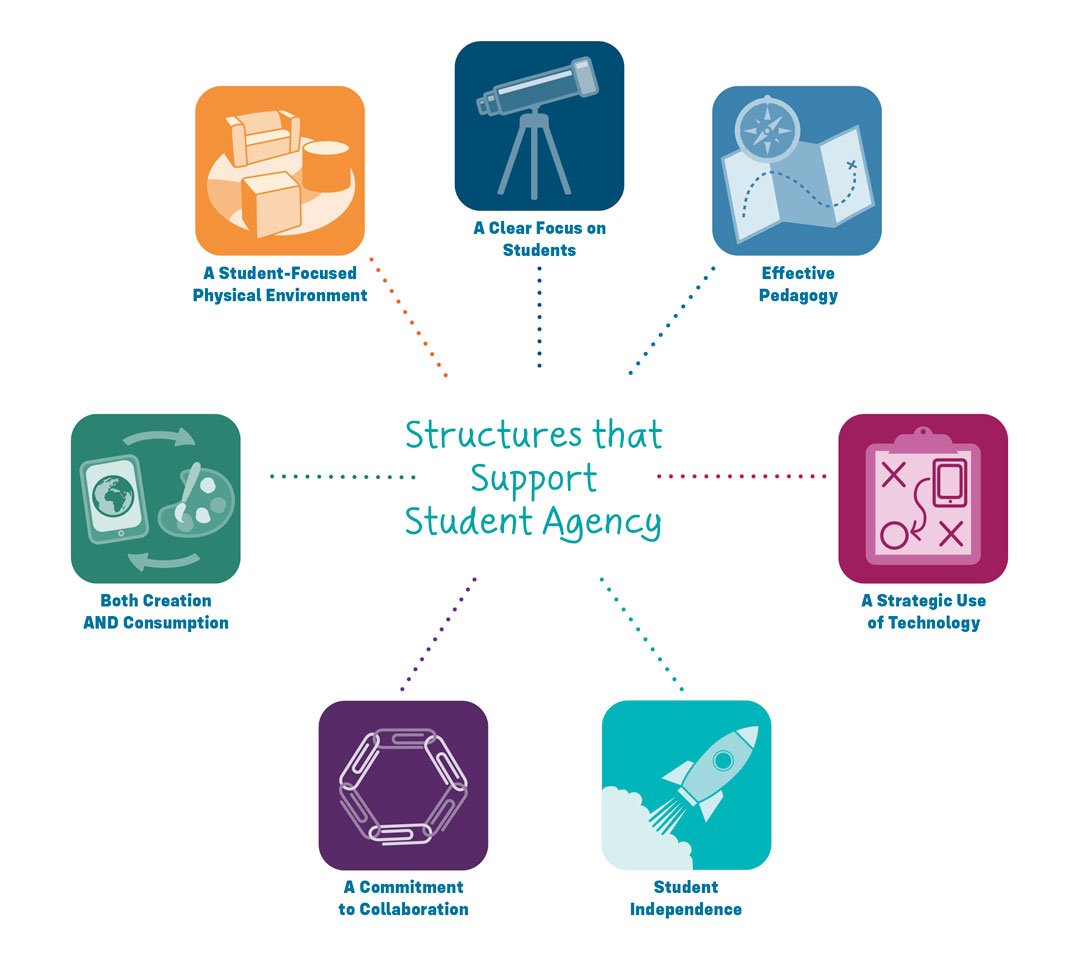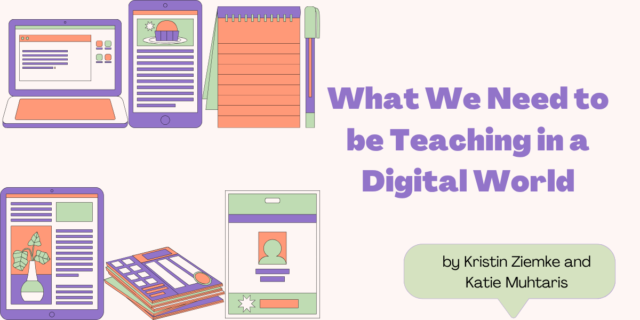
Kristin Ziemke and Katie Muhtaris, coauthors of Amplify! Digital Teaching and Learning in the K-6 Classroom and Read the World: Rethinking Literacy for Empathy and Action in a Digital Age, are hard at work to keep you connected to high-quality resources for remote teaching and learning. While you can certainly build skills and refine your online pedagogy through their books, their Distance Support Learning Site takes their expertise and applies it to your teaching life now with school completely online.
Kristin Ziemke and Katie Muhtaris, coauthors of Amplify! Digital Teaching and Learning in the K-6 Classroom and Read the World: Rethinking Literacy for Empathy and Action in a Digital Age, are hard at work to keep you connected to high-quality resources for remote teaching and learning. While you can certainly build skills and refine your online pedagogy through their books, their Distance Support Learning Site takes their expertise and applies it to your teaching life now with school completely online.
Watch the Facebook Live recordings of Kristin Ziemke and Katie Muhtaris discussing the issues surrounding digital teaching and learning for K-6 classes during the pandemic.
Their most recent book, Read the World, includes tons of ideas and lessons designed to effectively integrate technology into lessons that elicit thinking and engage kids.
The following are six interactive features that Kristin and Katie included in Read the World to help you personalize the information for both your professional learning and instruction for students.
Don't have the book? No worries! The features outlined below are included on their site to help you and your students during this time.
- Structures that Support Student Agency
In the book: Be on the lookout for one or more of these icons (below), cueing you to specific opportunities in the lessons on those pages.
How does this help me now? When you are making choices for how to design teaching and learning remotely, keeping one or more of these structures in mind can help you focus your planning.
What if I don't have the book? On their site, you can be sure that the lessons and examples provided are rooted in these structures that support student agency through integration of technology.
- Join the Conversation
In the book: QR codes titled Join the Conversation lead you to audio clips from the authors where they explore the topic on the page more deeply.
How does this help me now? It's important to think strategically about finding the right tools and structures to support your goals. Listening to experts in the field can help you keep children and sound pedagogy at the center.
What if I don't have the book? On their site, about halfway down on the homepage, you'll find a conversation between Kristin, Katie, and Jennifer Serravallo, providing you with an opportunity to listen to experts about planning for remote instruction. You can also find them on Twitter at @kristinziemke @katiemuhtaris and via the hashtag #ReadTheWorldNow. - Curated Lessons
In the book: You'll find lessons well-organized in the book with helpful headers to help you consider where, why and how the idea might fit into your instruction. Look for guidance in the lesson headers such as: Try this When, Helpful Language, Outcomes and Look Fors, and Follow Up.
How does this help me now? If you unsure about next steps or sequence while planning, these tips can help you make the right instructional decisions to be responsive to students.
What if I don't have the book? Their site has lesson ideas for choice boards, long-term planning, virtual workshop and more! Use their site navigation (screenshot below) to browse the content categories.
- Anchor Charts
In the book: Full-color sample anchor charts and infographics are included for your reference, created by teachers AND students! These examples help you to learn the format, language, and tools to create charts that support student learning.
How does this help me now? Anchor charts support student independence whether they are in the classroom or online. Posting anchor charts for students or using them during synchronous video teaching will be a great visual support.
What if I don't have the book? Kristin and Katie have included many anchor charts on their site via the More tab. By using these with students and studying their format as a mentor text, you'll be able to create your own to match your students' needs. - FAQ with the Authors
In the book: Ever wish you could have Q&A with authors while you read a professional book? You'll find an extensive FAQ list on pages 216-217 with audio recorded answers from Kristin and Katie accessible via QR code.
How does this help me now? Hearing from the authors on topics such as how to assess or meet standards will support you with sound advice as you plan for instruction.
What if I don't have the book? You can find Kristin and Katie on the Heinemann podcast! Check out the episodes linked below:
Episode: Teaching Digital Literacy with Kristin Ziemke and Katie Muhtaris
Episode: Read the World with Kristin Ziemke and Katie Muhtaris - Write with Us
In the book: We all know the power of writing as reflection, but often forget to do our own "stop and jots". Kristin and Katie relate—they included Write with Us journaling pages to process thinking at just the right times across the chapters.
How does this help me now? Everything is moving so fast that even the thought of making time to reflect is a challenge. But, a few moments of reflection can save you time in the long run. Find a colleague to do this with you so you have an accountability partner as you incorporate your new learning.
What if I don't have the book? Reflection can happen anywhere! You still may benefit from an accountability partner, but carve out a moment to stop and reflect on what is working right now, what your priorities need to be, and what questions you have. Head to the Resources section on their site as a follow-up to your reflections to find some support.
∗∗∗∗
Katie Muhtaris has enjoyed teaching and learning with her students in the Chicago Public School system for the last eight years. She is Nationally Board Certified as a Middle Childhood Generalist and holds a Master’s Degree in Teacher Leadership. In addition to her devotion to her students, Katie also leads staff development. Katie is the co-author of Read the World: Rethinking Literacy for Empathy and Action in a Digital Age, Amplify: Digital Teaching and Learning in the K-6 Classroom and Connecting Comprehension and Technology.
Kristin Ziemke is an urban school educator and the co-author of Read the World: Rethinking Literacy for Empathy and Action in a Digital Age, Amplify: Digital Teaching and Learning in the K-6 Classroom and Connecting Comprehension and Technology. Recognized as an international expert in literacy, inquiry, and technology, Kristin works with schools around the world to develop learning experiences that are student-centered, personalized, and authentic. She dedicates her research and writing to developing engaged and empowered students that empathize, understand, and care about the world. Currently serving as a resident teacher and innovation specialist for the Big Shoulders Fund, Kristin is an Apple Distinguished Educator, National Board Certified Teacher, and Chicago Council on Global Affairs Emerging Leader. This is her third book with Heinemann and her work has been featured by Apple, ISTE, EdWeek, Mindshift, and Scholastic.
You can connect with her online at KristinZiemke.com or on Twitter @KristinZiemke.


